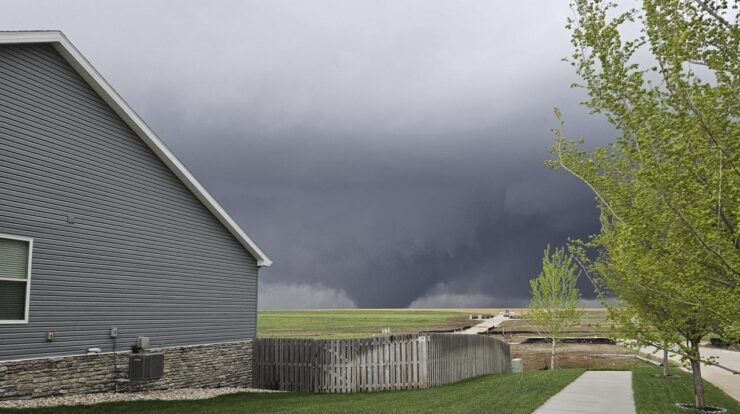
Tornado damage in Nebraska has left an indelible mark on the state, shaping its landscape and communities. From the devastating Pilger tornado to the historic Elkhorn tornado, these powerful storms have tested the limits of human resilience.
This comprehensive guide delves into the causes, impacts, and mitigation strategies surrounding tornado damage in Nebraska. By understanding the complexities of these storms, we can better prepare for and respond to future events, safeguarding lives and property.
Tornado Damage in Nebraska: Overview

Tornadoes are a common and devastating hazard in Nebraska, causing widespread damage and loss. Since 1950, the state has experienced over 1,000 tornadoes, resulting in significant property damage, injuries, and fatalities. Nebraska’s location in the central United States, known as “Tornado Alley,” makes it particularly vulnerable to these powerful storms.
Factors such as the state’s flat terrain, warm and humid climate, and frequent thunderstorms contribute to the high incidence of tornadoes.
Types and Severity of Tornado Damage
Tornadoes cause various types of damage, ranging from minor structural damage to complete destruction. The Enhanced Fujita Scale (EF Scale) is used to classify tornado intensity based on wind speeds and the extent of damage. EF0 tornadoes (65-85 mph) cause light damage, while EF5 tornadoes (over 200 mph) are the most destructive, capable of leveling entire structures and uprooting trees.
Nebraska has experienced numerous EF4 and EF5 tornadoes, including the devastating 2019 Pilger tornado and the 2014 Elkhorn tornado.
Impacts on Infrastructure and Economy, Tornado damage in nebraska
Tornadoes can have a severe impact on Nebraska’s infrastructure. Roads, bridges, and utilities are often damaged or destroyed, disrupting transportation and communication. Businesses are also affected, with tornado damage leading to closures, job losses, and insurance claims. The economic consequences of tornadoes can be significant, with the 2019 Pilger tornado alone causing an estimated $1 billion in damage.
Community Resilience and Recovery
Nebraska communities have developed strategies to enhance resilience to tornadoes. Emergency management plans, disaster preparedness measures, and community engagement play crucial roles in reducing the impact of these storms. Early warning systems, such as sirens and weather apps, provide valuable time for residents to seek shelter.
Community organizations and volunteers work together to support recovery efforts, providing assistance with cleanup, repairs, and emotional support.
Case Studies of Notable Tornadoes
The 2019 Pilger tornado was one of the most destructive tornadoes in Nebraska history. With an EF4 rating, the tornado caused widespread damage in the town of Pilger, killing one person and injuring several others. The 2014 Elkhorn tornado, also rated EF4, struck the Omaha metropolitan area, causing significant damage to homes, businesses, and infrastructure.
These case studies provide valuable insights into the impacts and response efforts associated with major tornadoes.
Mitigation and Prevention Strategies
Nebraska employs various mitigation strategies to reduce tornado damage. Building codes require new structures to withstand high winds, and tornado shelters are encouraged in homes and businesses. Warning systems are regularly tested and upgraded to ensure timely alerts for residents.
Land-use planning also plays a role, with restrictions on development in areas prone to tornadoes. Ongoing research and technological advancements are leading to improvements in tornado detection, forecasting, and mitigation techniques.
Final Thoughts
As Nebraska continues to face the threat of tornadoes, it is imperative to invest in resilience and prevention measures. By implementing advanced warning systems, strengthening building codes, and promoting community preparedness, we can mitigate the impacts of these destructive forces and build a more resilient future.
Quick FAQs
What is the most common type of tornado damage in Nebraska?
Structural damage, including damage to homes, businesses, and infrastructure.
What is the Enhanced Fujita Scale (EF Scale) used for?
Classifying tornado intensity based on wind speed and damage.
What are some strategies for mitigating tornado damage?
Building codes, warning systems, and land-use planning.





